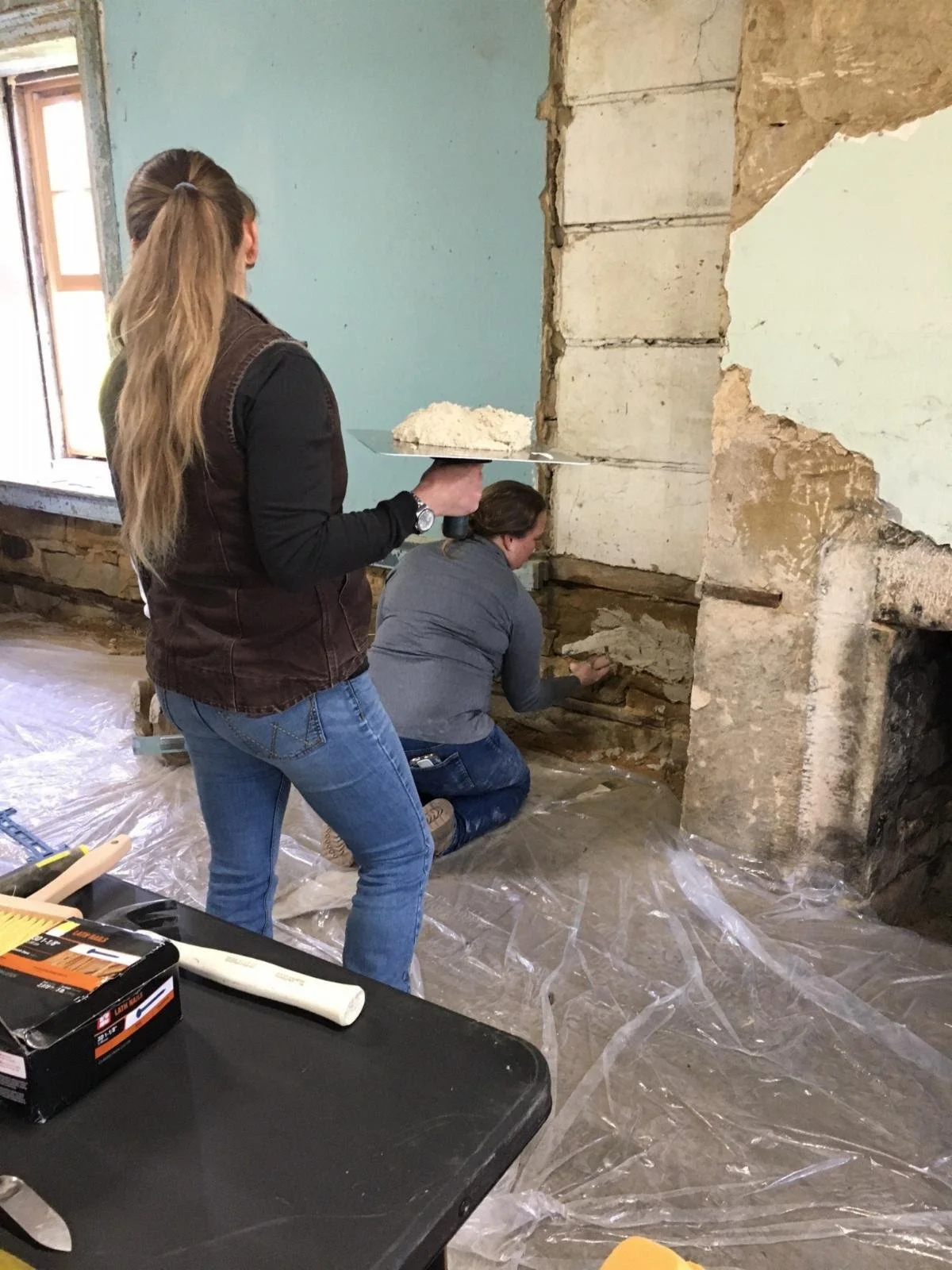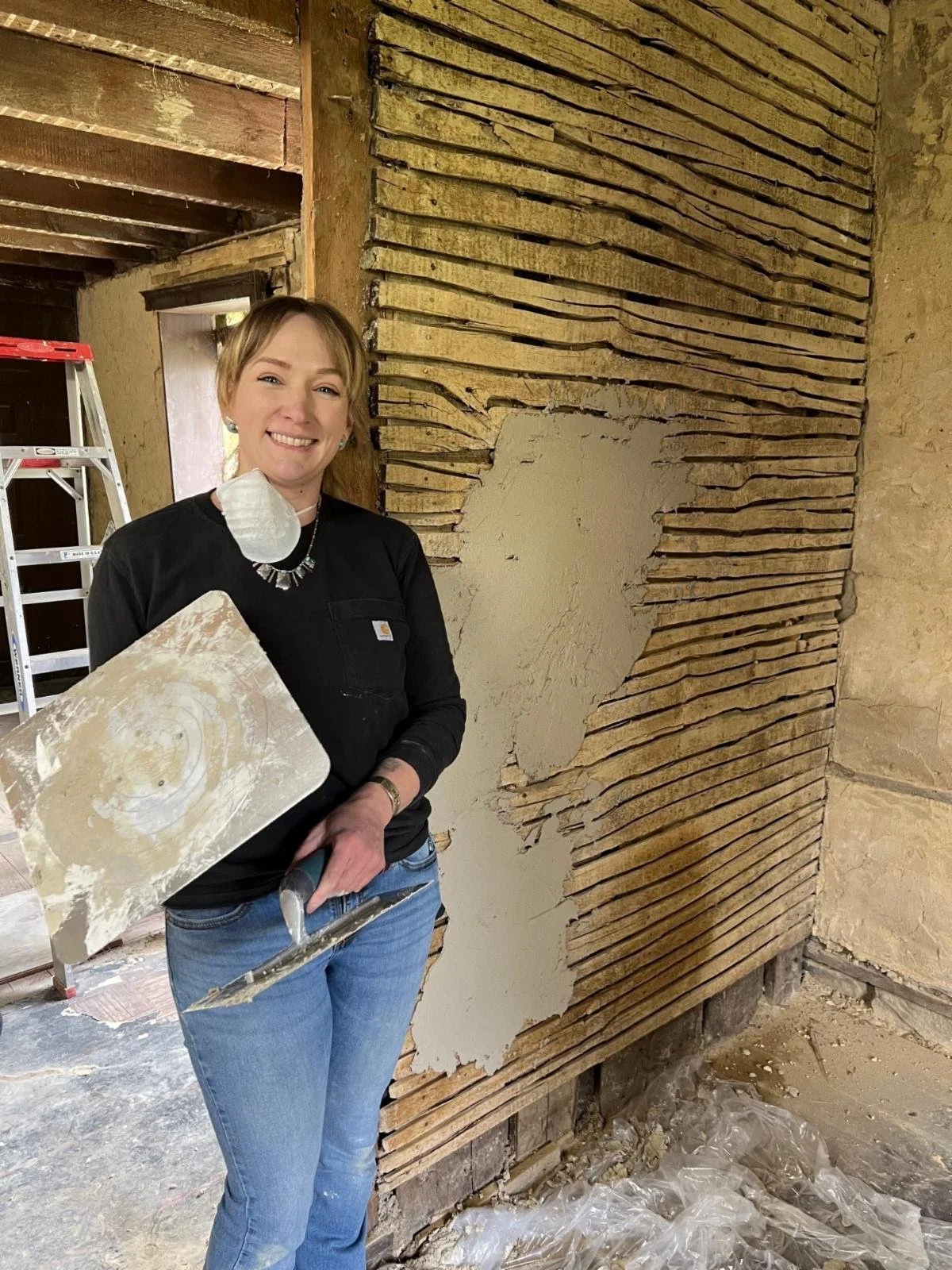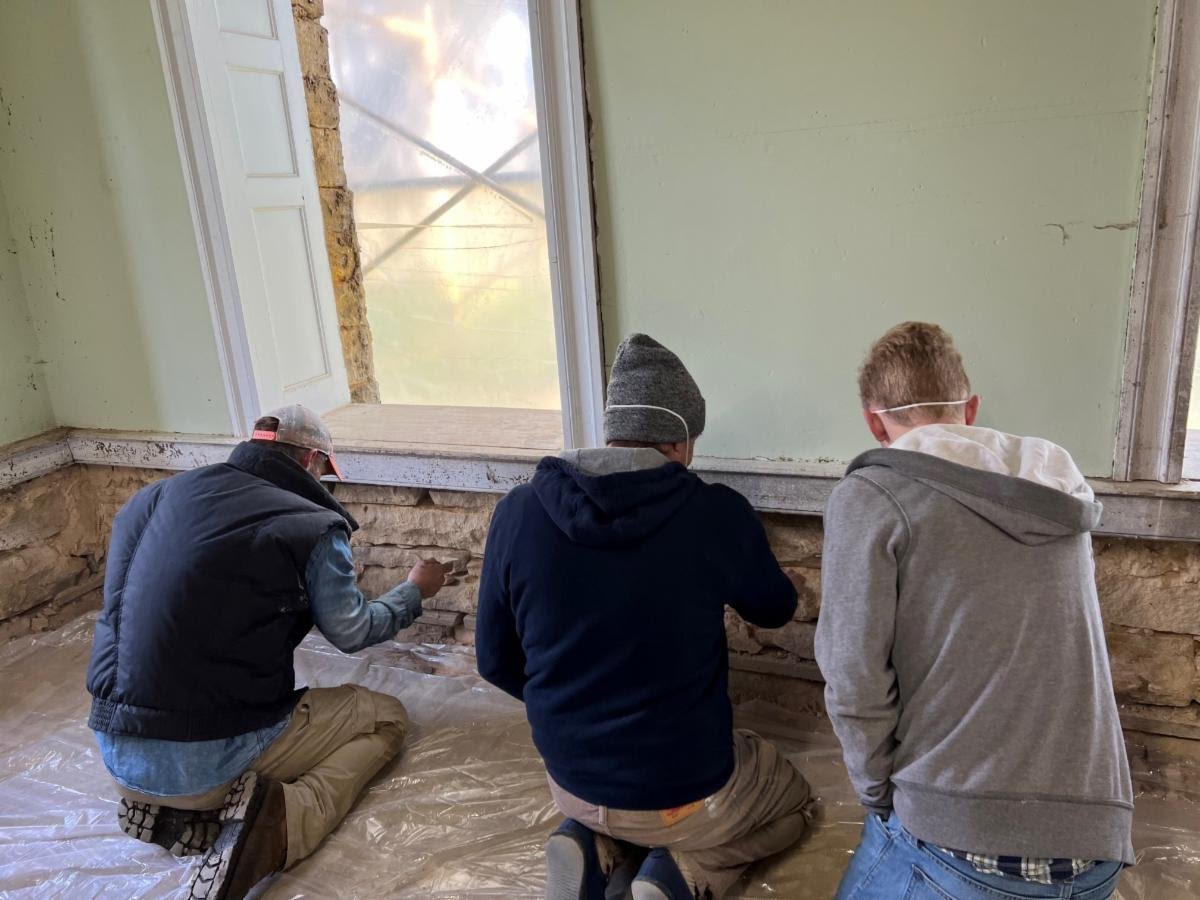Workshop Taught Three-Coat Plaster for Historic Preservation
The Oil Region Alliance held a hands-on workshop on restoring three-coat plaster at the historic Judge McKee House in Clintonville Saturday, May 6 from 9 a.m. to 1 p.m.
“Restoring original materials in historic structures such as the plaster in the Judge McKee House is imperative to maintaining the historic character and look of the building,” said ORA Project Manager Abigail Watson-Popescu, who led the workshop.
Three-coat lime plaster, consisting of a scratch coat, brown coat, and finish coat, is its own unique system that is superior in strength and durability, and allows the building to “breathe” by regulating moisture, according to Watson-Popescu.
“Three-coat plaster is quickly becoming a lost art,” Watson-Popescu said.
The workshop focused on methods of stabilizing historic plaster, as well as restoring plaster using traditional methods, tools, and materials.
Workshop attendees learned the properties of historic three-coat plaster, ways of repairing and stabilizing plaster in situ, and the proper methods of preparing and plastering a wall.
Watson-Popescu said, "Attendees can take this knowledge back to make repairs on their own historic homes.”
Materials were provided to use during the workshop and to take home for future use.
The Judge Thomas McKee Homestead was settled in 1796, with evidence that the stone structure was standing in 1821, making it one of the oldest houses still standing in Venango County. Judge Thomas McKee was named an associate judge when Venango County was formed in 1805.
The workshop was part of the Oil Region Alliance’s celebration of May as National Historic Preservation Month.








